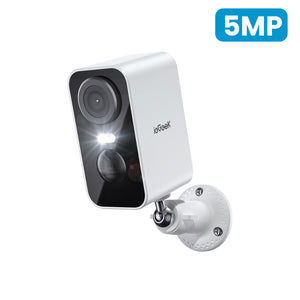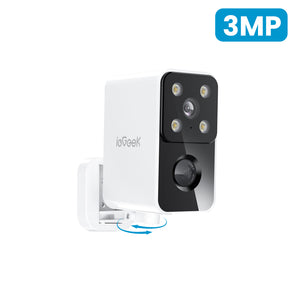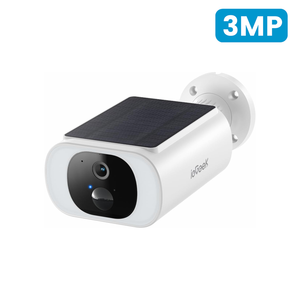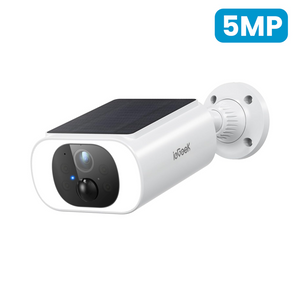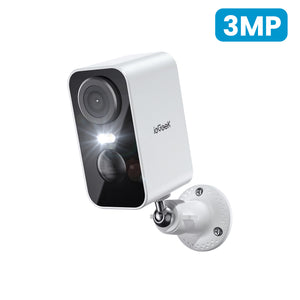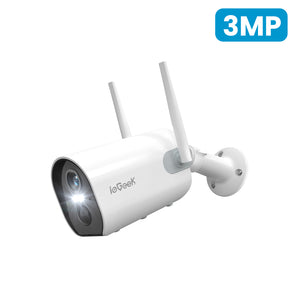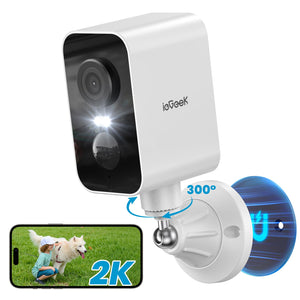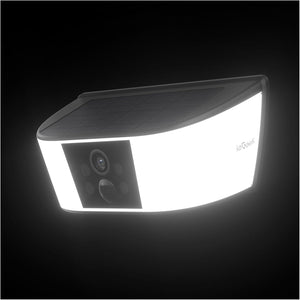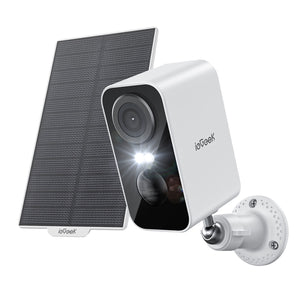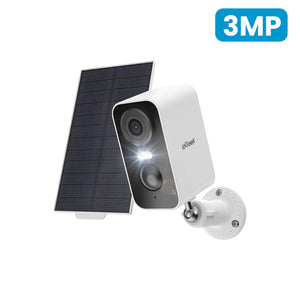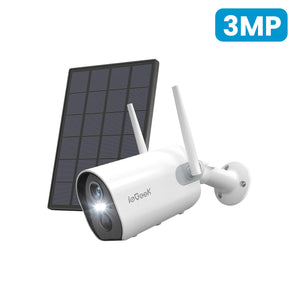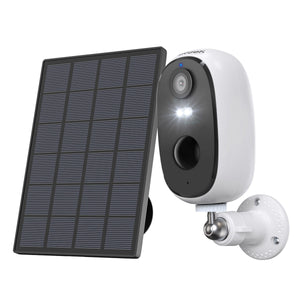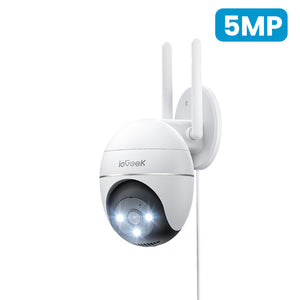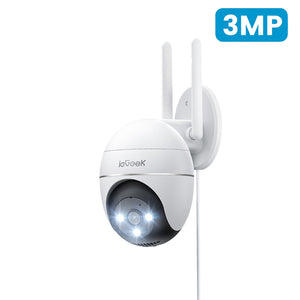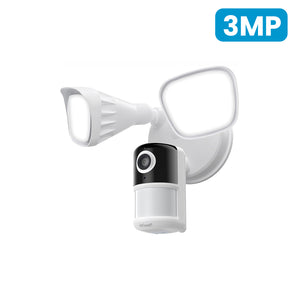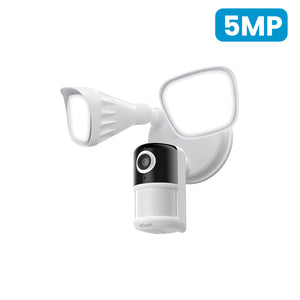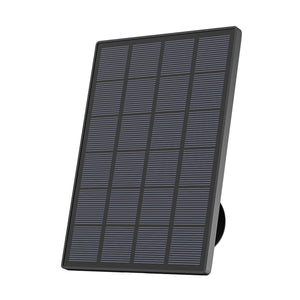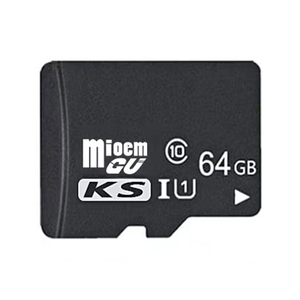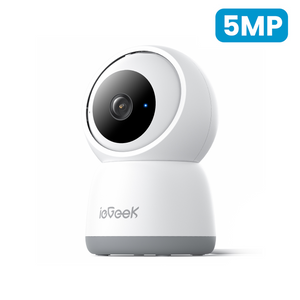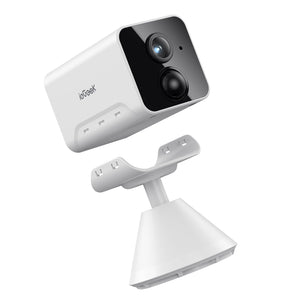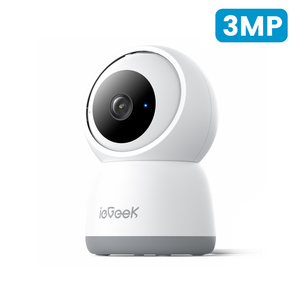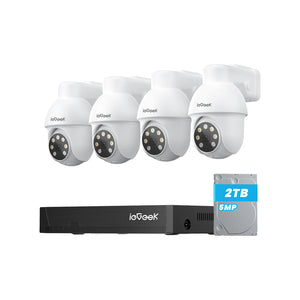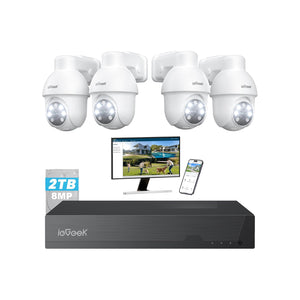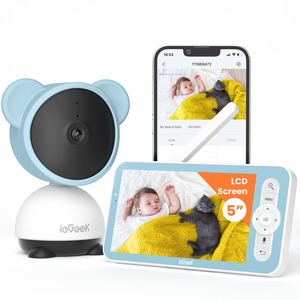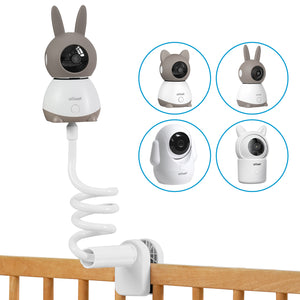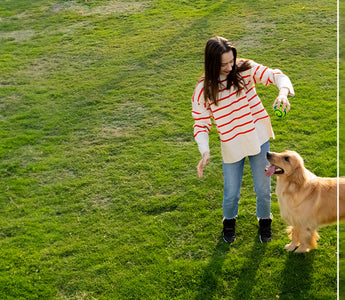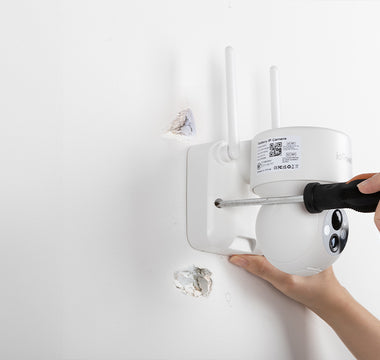In this comprehensive guide, we will explore everything you need to know about camera resolution. Whether you're a photography enthusiast, a professional, or just someone who loves capturing moments, understanding camera resolution can take your skills to the next level.
Camera resolution plays a crucial role in determining the quality of your photographs. It refers to the number of pixels captured by your camera's image sensor, which directly translates into the level of detail and sharpness in your images.
In this guide, we will delve into the intricacies of camera resolution and help demystify any confusion you may have. We'll start by explaining what camera resolution is and how it works, including the role of megapixels in image quality. We'll then explore the various factors that can impact camera resolution, such as sensor size, lens quality, and image processing algorithms.
Understanding image sensors, their types, and how they affect overall image quality is essential for capturing the resolution of an image. We'll cover that too. Moreover, we'll guide you through comparing different camera resolutions, so you can make an informed decision based on your specific photography needs.
But that's not all! We have recommendations for camera resolutions that best fit different photography requirements. For instance, the ieGeek Battery Cameras ZS-GX4S and ZS-GX3S, with their impressive 5MP pixels, can enhance your photography experience.
And to help you maximize the potential of your camera's resolution, we'll share expert tips and techniques for capturing and processing images that will make the most of your camera's capabilities.
So, if you're ready to take your photography to new heights, join us on this journey through the world of camera resolution. By the end of this guide, you'll have a solid understanding of camera resolution and how it can elevate your photography skills.

What is Camera Resolution?
Welcome to the world of camera resolution! In this section, we'll provide you with a comprehensive introduction to camera resolution, helping you understand its significance in capturing high-quality photographs.
Camera resolution refers to the amount of detail and clarity captured by a camera. It is determined by the number of pixels contained within an image sensor. The more pixels a camera has, the higher the resolution and the more detailed the resulting image.
Every image that you capture with your camera is made up of tiny dots called pixels. These pixels combine to form the complete image. A higher resolution means more pixels, resulting in sharper and more vibrant images.
When you increase the camera resolution, you increase the number of pixels packed into each image. This, in turn, allows you to capture images with finer details and less visible noise or distortion.
Understanding camera resolution is essential if you want to take your photography skills to the next level. Now that you have an idea of what camera resolution is, let's delve deeper into how it works and the factors that can affect it.
How Does Camera Resolution Work?
In this section, we will delve into the fascinating inner workings of camera resolution and explore how it affects the final image. Understanding the relationship between pixels and resolution is crucial for capturing high-quality photographs.
The Role of Pixels
Camera resolution is determined by the number of pixels in the image sensor. Pixels are tiny dots of color that make up a digital image. The more pixels a camera has, the higher its resolution and the more detail it can capture.
When you take a photo, the camera's image sensor captures light and converts it into digital data. Each pixel records information about its assigned color and brightness. These individual pixels come together to create a complete image on the camera's display or when viewed on a computer or other device.
The resolution of an image is measured in terms of megapixels (MP). One megapixel is equal to one million pixels. So, a camera with a resolution of 12 megapixels can capture images with 12 million pixels, resulting in more detail and clarity.
Impact on Image Quality
A higher camera resolution generally leads to better image quality. Higher resolution images have more fine details, sharper edges, and smoother gradients. This is especially noticeable when printing or zooming into a photo.
However, it's important to note that camera resolution is not the sole factor determining image quality. Other factors such as lens quality, sensor size, and image processing algorithms also play a significant role in the overall outcome.
Understanding how camera resolution works can help you make informed decisions when choosing a camera and lead to capturing stunning photographs filled with intricate details.
Megapixels and Image Quality
When it comes to capturing stunning photographs, understanding the role of megapixels in image quality is essential. Megapixels refer to the millions of individual pixels in an image sensor, and they play a critical role in determining the level of detail and sharpness in your photos.
In simple terms, higher megapixel counts can result in more fine details and crisper images. This is because a higher number of pixels allows for greater resolution, capturing more information and producing a higher-quality image.
While megapixels are not the sole factor that determines image quality, they are certainly an important one. Other factors, such as the size and quality of the image sensor, lens quality, and image processing algorithms, also contribute to overall image quality. However, having a higher megapixel count can provide a solid foundation for capturing clear, detailed photos.
The ieGeek Battery Cameras ZS-GX4S and ZS-GX3S: Unleash the Power of 5MP
If you're looking for a camera that delivers impressive image quality, consider the ieGeek Battery Cameras ZS-GX4S and ZS-GX3S. These cameras boast a noteworthy 5-megapixel resolution, enabling you to capture stunning, high-resolution images with exceptional detail.
With the ieGeek Battery Cameras ZS-GX4S and ZS-GX3S, you can confidently expect professional-grade results. Whether you're a photography enthusiast or a professional, these cameras will enhance your photography experience and help you unlock your creative potential.
So, if you're ready to take your photography to the next level, the ieGeek Battery Cameras ZS-GX4S and ZS-GX3S with their 5MP pixels are an excellent choice for capturing high-quality, detailed images that will truly impress.
Factors Affecting Camera Resolution
When it comes to camera resolution, several factors come into play that can significantly impact the final quality of your photographs. Understanding these factors is crucial for capturing sharp, detailed images that truly stand out. In this section, we will explore the various elements that can influence camera resolution and help you make informed decisions when choosing the right equipment for your photography needs.
Sensor Size
One of the key factors affecting camera resolution is the size of the image sensor. Generally, larger sensors tend to offer higher resolution capabilities as they can accommodate more pixels. Cameras with larger sensors have the advantage of capturing more light, resulting in better image quality and enhanced resolution. If you aim to achieve crisp, detailed images, consider investing in a camera with a larger sensor.
Lens Quality
The quality of the lens plays a vital role in determining camera resolution. A high-quality lens can effectively transmit the captured light onto the image sensor, resulting in sharper and more detailed images. Inferior lenses, on the other hand, may introduce distortions and reduce the overall resolution of your photographs. When selecting a camera, ensure that it comes with a lens known for its optical performance to maximize the camera's resolution potential.
Image Processing Algorithms
The image processing algorithms employed by the camera's software also have a significant impact on the final resolution of your photographs. These algorithms interpret the captured data and apply various enhancements to produce the final image. Cameras with advanced image processing capabilities can optimize resolution by reducing noise, sharpening details, and improving overall image quality. When comparing cameras, look for models that offer advanced image processing algorithms to ensure you achieve the highest resolution possible.
By taking into account these factors - sensor size, lens quality, and image processing algorithms - you can make informed decisions when selecting a camera and maximize its resolution capabilities. Now that we've explored the key factors affecting resolution, let's move on to understanding image sensors in the next section.
Understanding Image Sensors
When it comes to capturing the resolution of an image, image sensors play a crucial role. Image sensors are the heart of a camera, converting light into digital signals to create the final photograph. Understanding how image sensors work can help you make informed decisions when choosing a camera for your photography needs.
There are different types of image sensors available, including CCD (Charge-Coupled Device) and CMOS (Complementary Metal-Oxide-Semiconductor) sensors. CCD sensors are known for their high image quality and low noise performance, making them a popular choice among professionals. On the other hand, CMOS sensors are more commonly found in consumer-grade cameras due to their lower power consumption and cost-effectiveness.
Image sensors also come in various sizes, such as APS-C, full-frame, and micro four-thirds. The sensor size directly affects the image quality and low-light performance of a camera. Larger sensors tend to capture more light, resulting in better image quality, especially in challenging lighting conditions.
The ieGeek Battery Cameras ZS-GX4S and ZS-GX3S
If you're looking for cameras with impressive image sensors, consider the ieGeek Battery Cameras ZS-GX4S and ZS-GX3S. These cameras boast 5MP pixels, ensuring sharp and detailed photographs. With their advanced image sensor technology, you can capture stunning images across a wide range of shooting scenarios.
Whether you're a professional photographer or a photography enthusiast, understanding image sensors and their impact on image resolution is essential. By choosing the right camera with the right image sensor, you can elevate your photography to new heights and bring your creative vision to life.
Comparing Camera Resolutions
When it comes to choosing a camera, understanding the different resolutions available is crucial. In this section, we will guide you through the process of comparing camera resolutions, allowing you to determine the one that best suits your photography needs.
Differences Between Camera Resolutions
Camera resolutions can vary significantly, with options ranging from 2MP to 100MP or more. The higher the resolution, the more detail and clarity your photos will have. However, keep in mind that higher resolutions also result in larger file sizes, requiring more storage space. Additionally, consider your intended use for the images. If you primarily share your photos on social media or view them on digital devices, a lower resolution may suffice. On the other hand, if you plan on printing your photos or need them for professional purposes, a higher resolution would be advantageous.
Choosing the Right Camera Resolution
When comparing camera resolutions, it's essential to consider your specific photography needs. For casual photographers and beginners, a resolution between 12MP and 24MP should be more than sufficient for capturing everyday moments and sharing them online. If you're an enthusiast or a professional photographer, a resolution of 24MP or higher would enable you to capture intricate details, particularly for landscape, wildlife, or studio photography.
One recommended option is the ieGeek Battery Cameras ZS-GX4S and ZS-GX3S. These cameras boast 5MP pixels, which strike a balance between excellent image quality and manageable file sizes, making them suitable for a wide range of photography needs. Whether you're capturing breathtaking landscapes or action-packed sports events, the ieGeek Battery Cameras deliver remarkable results.
By comparing camera resolutions and considering factors such as intended use, you can make an informed decision when selecting a camera that will meet your specific requirements.
Recommended Camera Resolution for Different Needs
When it comes to camera resolution, choosing the right one for your photography needs is crucial. Different situations call for different levels of detail and clarity. To help you make an informed decision, we have gathered recommendations for camera resolutions that best fit specific requirements.
Capturing Breathtaking Landscapes
If you're an avid landscape photographer, you'll want a camera with a high resolution that can capture all the intricate details of vast landscapes. For this purpose, we recommend the ieGeek Battery Camera ZS-GX4S with its advanced 5MP pixel resolution. With this camera, you can experience the magic of nature in every pixel.
Preserving Special Memories
When it comes to preserving those precious moments and special memories, having a camera that captures every emotion and detail is essential. We recommend the ieGeek Battery Camera ZS-GX3S that also features a powerful 5MP pixel resolution. This camera ensures that each moment is beautifully preserved and can be cherished for years to come.
No matter what camera resolution you choose, it's important to understand your specific needs and find the right balance between detail and file size. The ieGeek Battery Cameras ZS-GX4S and ZS-GX3S, with their 5MP pixel resolution, offer the perfect combination of clarity and versatility for different photography needs.
Tips for Maximizing Camera Resolution
When it comes to capturing stunning photographs, understanding and maximizing your camera's resolution is key. By following these expert tips, you can take full advantage of your camera's capabilities and ensure that every shot is sharp, detailed, and visually appealing.
1. Choose the Right Megapixel Count
One of the most important factors in camera resolution is the megapixel count. While a higher megapixel count can provide more detail, it's essential to choose the right count for your photography needs. Consider factors such as the intended print size and your requirements for image cropping. For most general photography purposes, a camera with 10-20 megapixels is sufficient.
2. Invest in Quality Lenses
Maximizing camera resolution also involves using high-quality lenses. A premium lens can significantly enhance the sharpness and clarity of your images. Look for lenses with excellent optics and minimal distortion. Remember, the lens you choose has a direct impact on the overall image quality, so invest wisely.
3. Properly Align and Stabilize Your Shots
To achieve the highest resolution possible, it's crucial to properly align and stabilize your camera during capture. Use a sturdy tripod or find a stable surface to minimize any camera movement or shake. This technique will result in sharper images with greater detail, particularly in low-light conditions.
4. Pay Attention to Exposure and Lighting
Correctly exposing your images and paying attention to lighting conditions can significantly affect camera resolution. Avoid overexposure or underexposure, as it can lead to loss of detail. Use the camera's exposure compensation feature to adjust the exposure levels, and be mindful of the available natural or artificial lighting, which can further enhance the resolution of your shots.
5. Shoot in RAW Format
For maximum control over image processing and to retain the highest level of detail, consider shooting in RAW format. RAW files capture all the data captured by the camera sensor, allowing for more extensive post-processing adjustments without degrading image quality. This format enables you to maximize the resolution during the editing process.
6. Optimize Image Processing
Take advantage of image processing software to optimize the resolution of your photographs. Use sharpening tools selectively to enhance the fine details and apply noise reduction to minimize any digital noise that can occur at higher ISO settings. Experiment with different processing techniques to find the optimal balance for maximizing resolution.
By implementing these tips, you can maximize the potential of your camera's resolution and elevate your photography to new heights. Whether you're capturing landscapes, portraits, or any other subject, these techniques will help you achieve stunning results with every shot.
Conclusion
Understanding camera resolution is key to unlocking the true potential of your photography. Throughout this comprehensive guide, we have explored the various aspects of camera resolution and its impact on image quality. By grasping the concepts of camera resolution, you can elevate your photography skills and capture breathtaking moments with precision.
One of the essential factors influencing camera resolution is the megapixel count. Higher megapixel counts, such as the 5MP pixels found in the ieGeek Battery Cameras ZS-GX4S and ZS-GX3S, contribute to sharper and more detailed photos. These cameras are highly recommended for enthusiasts seeking exceptional image quality.
Additionally, we have discussed other factors like sensor size, lens quality, and image processing algorithms that play a crucial role in determining camera resolution. By considering these factors and selecting the right equipment, you can maximize the potential of your camera's resolution.
As you continue your photography journey, remember that camera resolution is not solely about a number but the possibilities it offers. With an understanding of camera resolution, you can unleash your creativity and capture stunning images that truly stand out.




